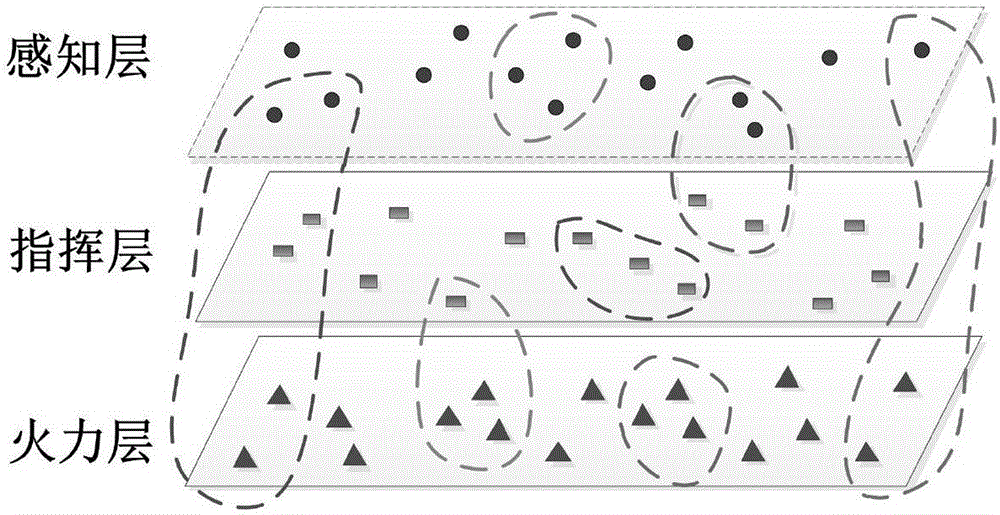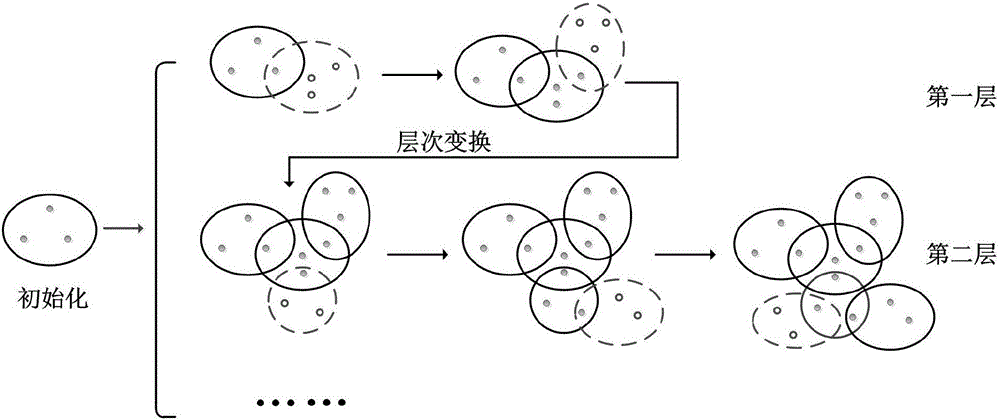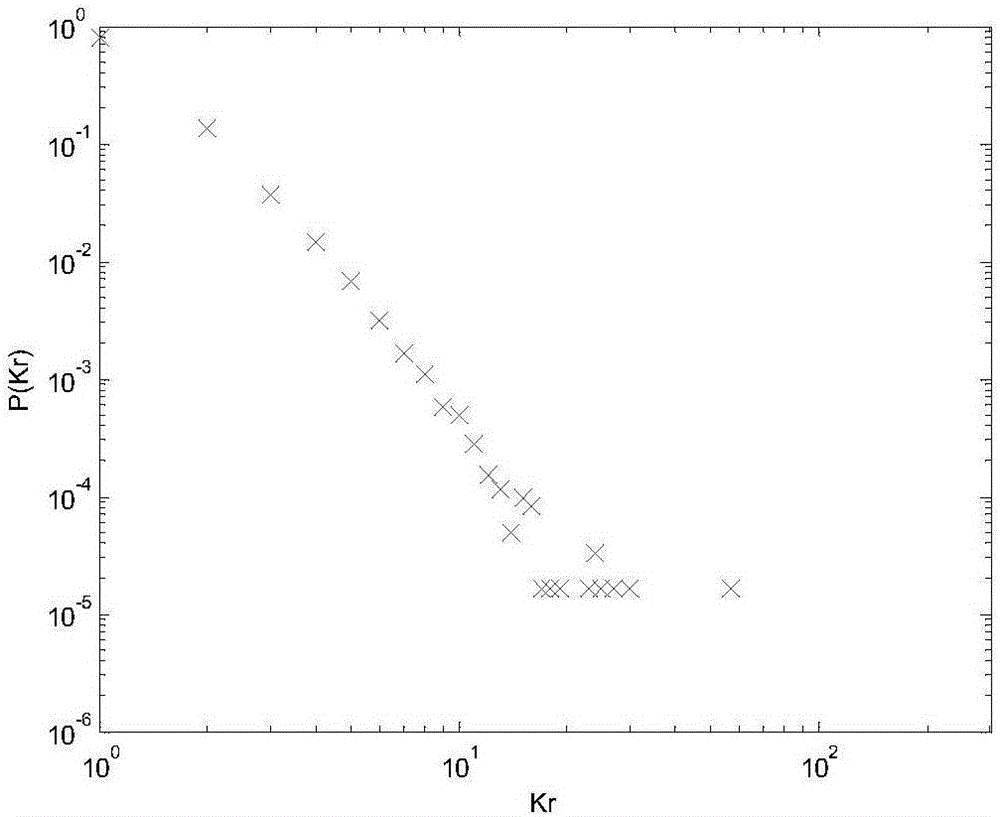Supernet-based command and control network hierarchical evolution method
A network layered and super-network technology, applied in the field of command and control network modeling, can solve problems such as network integration and single evolution, and achieve the effects of multiple node functions, high command efficiency, and good connectivity between nodes
- Summary
- Abstract
- Description
- Claims
- Application Information
AI Technical Summary
Problems solved by technology
Method used
Image
Examples
Embodiment 1
[0032] This embodiment provides a method for hierarchical evolution of accusation network based on supernetwork, which specifically includes:
[0033] Step 1: Abstract the relationship between nodes in the accusation network:
[0034] The nodes of the command and control network can be divided into three levels according to their functions, including the perception layer, command layer, and firepower layer. Nodes are abstracted into supernodes in the hypernetwork, and the connections between nodes are abstracted into hyperedges in the network. The command node often needs to receive information from multiple intelligence nodes and command multiple firepower nodes. A hyperedge can be used to connect the relevant intelligence nodes, firepower nodes and command nodes to form a set of combat relationships; at the same time, between command nodes, firepower There is also information interaction between nodes and between sensing nodes. Several nodes are connected by a hyperedge to ...
Embodiment 2
[0039] As a further limitation to Embodiment 1, the construction process of the layered evolution model of the accusation supernetwork is as follows:
[0040] Step 1, initialization: there is already a hyperedge, connecting m nodes;
[0041] Step 2, increase the network nodes: at the nth layer time step t n , and 1≤n≤K, select a node from the existing network nodes according to the probability P(i), and use a hyperedge to connect this node with the newly added M n node connection;
[0042] The connection probability P(i) of selecting node i each time is equal to the hyperdegree d of node i H (i) The ratio to the sum of the hyperdegrees of existing nodes in the hypernetwork, the formula is:
[0043]
[0044] Step 3, layer transformation: when the nth layer new node increases C n After the number of times, enter the (n+1) layer modeling, and the number of nodes added each time in the (n+1) layer becomes M (n+1) , the number of increments in this layer becomes C (n+1) Seco...
Embodiment 3
[0047] The verification of the hierarchical evolution network model constructed in Example 2 is as follows: In order to ensure the accuracy of the experimental results and make the experimental results comparable, the number of nodes is selected to be about 60,000, and the simulation results are the average of 10 experiments. In the initial state, it consists of 3 supernodes and 1 hyperedge, each additional node is connected to one of the existing nodes, and so on. This group of experiments consisted of one-layer network model, that is, the conventional hyper-network model and the 5-layer network model. Through simulation modeling, the hyper-degree distribution of the model was counted, and the statistical distribution was obtained as follows: image 3 with 4 shown. The experimental data are specifically: {K=1, M n = 3, C n =20000}, a total of 60003 nodes and 20000 hyperedges are generated, such as image 3 ;{K=5,M n = [2, 5, 7, 9, 13], C n =[760, 960, 1140, 1800, 2280]}...
PUM
 Login to View More
Login to View More Abstract
Description
Claims
Application Information
 Login to View More
Login to View More - R&D
- Intellectual Property
- Life Sciences
- Materials
- Tech Scout
- Unparalleled Data Quality
- Higher Quality Content
- 60% Fewer Hallucinations
Browse by: Latest US Patents, China's latest patents, Technical Efficacy Thesaurus, Application Domain, Technology Topic, Popular Technical Reports.
© 2025 PatSnap. All rights reserved.Legal|Privacy policy|Modern Slavery Act Transparency Statement|Sitemap|About US| Contact US: help@patsnap.com



